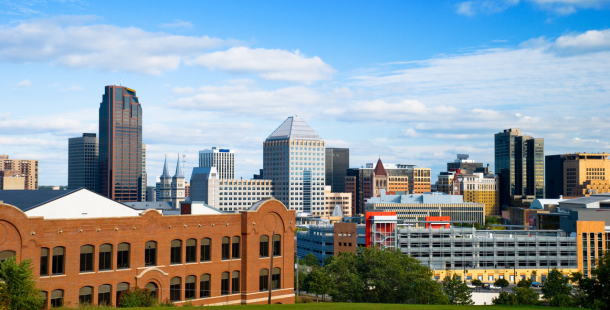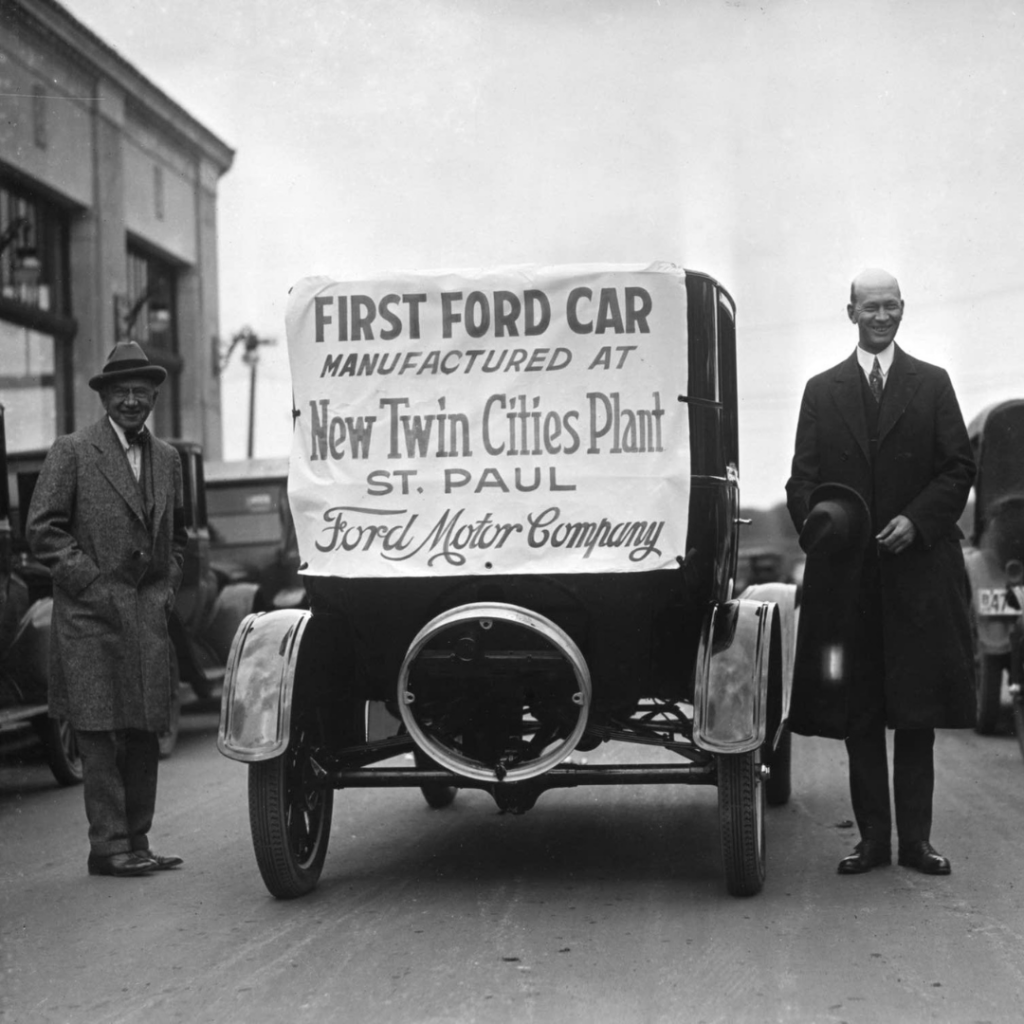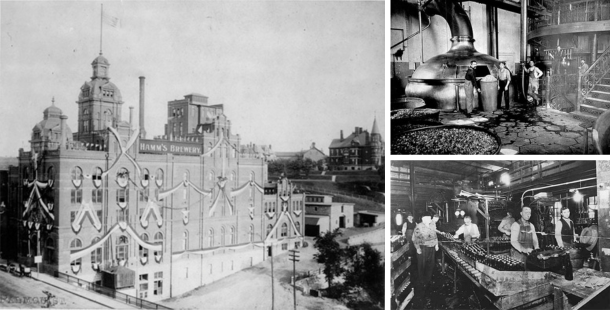Back

Blog
From Brownfields to Business Centers: The Evolution of Industrial Land Use in Saint Paul, Minnesota
By Miles Chandler, ICIC Senior Research Associate | May 21, 2024
When asked to paint a portrait of urban industrial activities, a semi-random selection of everyday people (or, in my case, whichever friends and family members I could get ahold of) might conjure up images of rolling smokestacks from the early American Industrial Revolution, bring up Rachel Carson’s Silent Spring, or offer a harrowing portrait of economically distressed Detroit from the 1970s. The popular conception of urban industrial activity describes it as antiquated, dangerous, and environmentally harmful, or in the context of economic hardship, instability and decline. Of course, each of these stories contains elements of the truth; while the U.S. industrial boom of the mid-19th century brought prosperity to a diverse set of Americans, it also left a legacy of environmental harm and economic decline as domestic production of goods faltered in the globalizing economy of the 70s and 80s.

Though important, these narratives do not tell the full story. There are many upsides to including industrial activities among a suite of diverse land uses across a city. Industrial jobs, which often have lower educational requirements but pay relatively well, can powerfully advance the goal of equitable workforce development. Active industrial land use contributes revenue to the maintenance of quality public spaces, roads and other infrastructure, and the funding of public safety and community services, but does not intensively require public resources to maintain. The redevelopment of industrial parks makes space for innovative mixed-use commercial spaces, and is a way to increase land use efficiency in dense urban scenes, fund environmental remediation, and generate enormous impacts on a local economy.
The Industrial Roots of Saint Paul

Saint Paul, Minnesota is an example of a city that was crucially molded by the manufacturing sector, but where industrial activities struggle to maintain a foothold in the present day. Prior to the early 19th century, land use change and expansion of Saint Paul were primarily driven by sporadic and uncoordinated spurts of real estate development, often supporting lumber, prospecting, and residential settlement efforts.[1] The Ford assembly plant was first finished in 1925, and had profound effects on the development of residential land and public infrastructure in the surrounding neighborhoods of Highland Park, Randolph, and the Grand.[2] This flurry of major development coincided with the city’s first zoning ordinance in 1923, and the emergence of formal land use guidelines similar to those used today.
The adhesives company 3M, a Fortune 500 company and one of the largest manufacturers in the state, has had a similarly significant sway on the development of the city since its establishment as a small sandpaper company on the city’s east side in 1935.[3] A number of other household name companies, including Whirlpool and Hamm’s Beer, began and grew in Saint Paul, supporting its manufacturing workforce and shaping its residential, commercial, and (of course) industrial spaces for decades. The Ford assembly plant closed in 2012, but its infrastructure and development legacy live on in Ford Parkway, and the historic Highland Park water tower. In this way, the history of urban planning and development in Saint Paul is inextricably tied to its industrial roots.

(Left) Hamm’s Brewery (approx.) 1900 Photographer: Alfred U. Palmquist; (Right)
Operations at Hamm’s Brewery in 1910. Images courtesy of Minnesota Historical Society.
Since the era in which Saint Paul was considered an industrial city, the face of urban industrial land use has changed. Today, light industry plays a much greater role, and often takes forms that people might not even immediately identify as industrial use: microbreweries, body shops, laboratories, flex spaces, and other types of facilities dynamically occupy industrial land across the city.[4] The Saint Paul Port Authority is part of this ongoing transformation of industrial space. Their development strategy leverages vacant land, often previously used for heavy industry, and through environmental remediation and innovative redevelopment of ‘brownfields,’ creates vibrant business centers that support a wide range of industrial and other commercial uses.
The Insights and Implications of Land Use in Saint Paul

From 2022 through 2024, ICIC worked with the Port Authority to research industrial land use and employment patterns in Saint Paul from a number of angles. In 2022, we conducted an analysis to determine the impact of each type of land use in Saint Paul on the city’s revenues and expenditures. In 2023, we reported on broad industrial employment trends from 2008 to 2022, examined the geographical distribution of industrial jobs in the city, estimated the combined economic impact of the Port Authority business center developments, and projected the impact of a mixed-use light industrial development that is currently under construction. The study found:
- Properties occupied by light industrial land use in Saint Paul are important players in funding the city budget, returning $1.45 for each dollar the city spends on them.
- Jobs in industrial sectors consistently paid higher average wages than jobs in non-industrial sectors every year from 2008 to 2022.
- Industrial jobs are decentralizing from Saint Paul’s industrial zones and are becoming less concentrated in historic manufacturing hubs across the city.
- Businesses located in the Port Authority’s redevelopment projects (‘business centers’) have an enormous economic impact on the local economy; in 2022, they supported $9.3 billion in economic activity and 43,491 jobs in the city through direct, indirect, and induced spending.
The full results of this project are available here.
While the character of industrial land use and public attitudes toward the topic have changed drastically over the intervening century, activities like manufacturing, transportation, and warehousing are as crucial to the development of the city of Saint Paul today as they were during its earliest days.
[1] https://www.stpaul.gov/sites/default/files/2022-08/2001%20Context%20Study%20-%20Real%20Estate%20Development.pdf pg. 5-7.
[2] https://www.stpaul.gov/sites/default/files/2022-08/2001%20Context%20Study%20-%20Real%20Estate%20Development.pdf, pg 20.
[3] https://www.twincities.com/2016/08/22/what-was-st-pauls-east-side-like-in-its-economic-glory-days/
[4] https://icic.org/wp-content/uploads/2016/04/ICIC-Saint-Paul.pdf pg. 3-5.
About ICIC Research
ICIC’s research helps public, private, nonprofit, and community leaders understand and respond to the community and economic development challenges facing under-resourced communities—large urban and suburban areas of concentrated poverty and low income. Our unique knowledge of these communities’ strengths and challenges is developed from path-breaking research, consulting, and practice. Our research agenda, which encompasses community and economic development, small business and entrepreneurship, industries and clusters, anchor initiatives, and program evaluation, has positioned ICIC as the leading and most trusted resource on under-resourced communities and their economies. Learn more about our research at https://icic.org/research/ or contact us at research@icic.org for information on how to partner with us on future projects.
